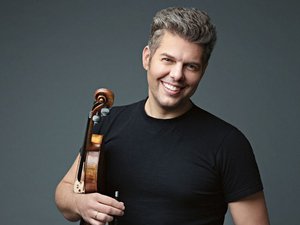László DUBROVAY: Festive Overture
DOHNÁNYI: Violin Concerto No. 1 in D minor, op. 27
--intermission--
BARTÓK: Dance Suite, BB 86
BARTÓK–KOCSIS: Scherzo
Barnabás Kelemen violin
Concerto Budapest
Conductor: Tibor Bogányi

The programme launching with László Dubrovay’s Festive Overture vividly portrays the organic unity of 20th and 21st-century Hungarian music even in its diversity, its known and to-be-discovered values, its points of contact and its richness more profound than suspected. Ernst von Dohnányi's Violin Concerto in D minor – begun virtually on the very first days of the First World War – premiered in Copenhagen in 1919, with the solo violin played by Emili Telmányi, Koessler and Hubay’s former student at the Liszt Academy, who’d found his new home in Denmark. The concerto marking a definite boundary in the private life and the career of its composer as well as in history is now performed by the Kossuth Award-winning violinist Barnabás Kelemen. (Music) historical references are perhaps even more evident in Bartók’s Dance Suite, which premiered at the festive jubilee concert held in 1923 in Vigadó for the 50th anniversary of the unification of Buda, Pest and Óbuda and is considered the most renowned Hungarian musical event of the last century. Bartók's dance compilation evokes the history and communion of peoples living along the Danube and, therefore, of all humankind. Finally, the last work in the programme, Bartók's Scherzo dedicated to Dohnányi, recalls both the early career of a young Bartók and the memory of Zoltán Kocsis who supremely represented the art of the greatest Hungarian composer as pianist, conductor and skilled arranger.
